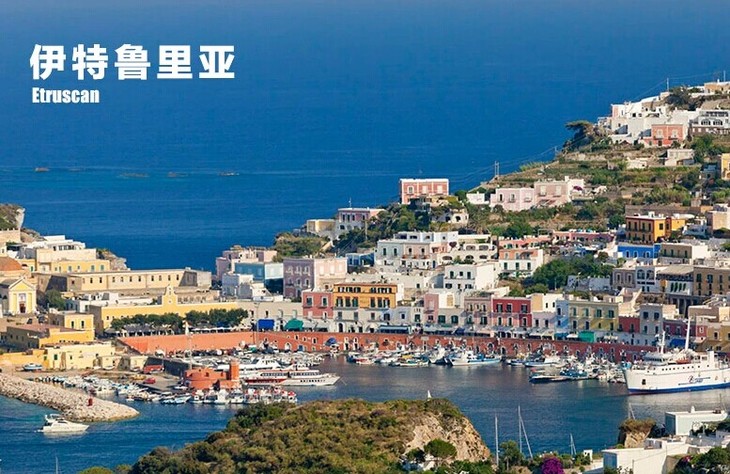Introduction
The name
The ancient Greeks called the Etruscans “Tyrrhenians” or “Etruscans”, while the Etruscans called themselves “Larsenas”.
Language
Etruscan is not part of the Indo-European language family, but little is known about the language and it is not yet decipherable. The Latin script is derived from the Etruscan script.
Culture
Of all the ancient inhabitants of Italy, the Etruscans are probably the one that has inspired the most curiosity and mystery in later generations. It is true that any ancient culture has a mysterious aspect, but this culture can no longer be regarded as “mysterious Etruscan”, but on the contrary, it is probably the best understood pre-Roman Italian culture.

Etruria
Origins
An overview of archaeologists have disagreed about the origins of the Etruscans. The ancient theory is that the Etruscans came from Asia Minor, descended from the Pelasgians, and that their ancestors came to the Tyrrhenian coast, led by Tyrano, son of Attis, the king of Lydia, to escape a famine that was destroying them. A second hypothesis emerged at the beginning of the 19th century, but one that evolved from the first, suggesting that the Etruscans were a mainstream migration from the north, crossing the Alps to Italy. Both of these claims are immigrant claims. The third is the authentic native theory, which suggests that the Etruscans must have descended from the ancient inhabitants of the region who were born and bred there. All of these theories seem outdated today. This is due to one of the most outstanding Italian archaeologists of the twentieth century, Massimo Pallottino. Parrotino. He emphasised that each of these theories has its own insurmountable limitations due to the biased premises of its study. In his view, it is a mistake to make ethnogenesis the main direction of research. The study of a people’s history should focus on the process of its development rather than on its origins alone. The identity of any people is shaped by a combination of factors. From this premise, the only way to explore the formation of an ethnic group is to study its development and integration into a new culture through the interaction of various folklore and cultural factors.
As with the origins of the Etruscans, their language has always been a mystery. In fact, the Etruscan language is not difficult to read, since the alphabet was brought to Italy by the first Greek colonists, with only minor adaptations. Significantly, its script is written from right to left and there are no breaks in the early texts. A little later, phrases began to be read in sentences with dots or spaces. However, there are still many problems in deciphering the Etruscan language. One of the main difficulties is that the language differs from Greek, which is still spoken today and has been extinct for more than two thousand years. Moreover, there are very few texts available for study, all of which are fragmentary and in a state of disrepair. Moreover, a great deal of the written material is very brief, mostly concerning funerary content, and what is seen is often the names of monuments named after the deceased or of artefacts contained in inscriptions.
The Etruscan region lay between the rivers Arno and Tiber and included parts of present-day Umbria, Tuscany, Lassim leading to Rome, and the area on the right bank of the Tiber. With commercial and political expansion, the Etruscans extended their power into the Campanian region. Monuments with an Etruscan style also began to be built in the Padania valley.
The term “Etruscan art” is not in any way national, but simply represents the “Etruscan” culture that prevailed in the Italian peninsula from the ninth century BC to the beginning of the first century BC. It is important to note that the Etruscan cities were quite independent, so that Rome was able to break through them and incorporate them fully into the Roman territory by the first century BC.
History
Overview
Despite the scarcity of information on the Etruscans in Greek and Latin literature, the rich and varied archaeological discoveries and in-depth research available today have clarified the historical development of Etruria from the ninth century BC to the first century BC.
Development
In 900 BC, during the Villanova culture, an “egalitarian” society was established and villages were distributed along natural trade routes.
In 800 BC, the Etruscans come into contact with the Phoenician-Punic civilisation, producing crafts and trading.
In 725 B.C., during the Eastern Culture period, a “lordly society” emerges, powerful families appear and Greek culture enters the region strongly. The production of black pottery, bronze, gold and silver began in Buccello.
580 BC, Archaic period, the formation of urban society, the rise of cities, the development of large buildings and monumental sculpture, and the emergence of large-scale bronze workshops influenced by Greek Ionian and Athenian styles.
480 BC, Classical period. In 474 BC the Etruscans were defeated by the Syracusans and the economy began to decline.
325 BC, Hellenistic period, the emergence of an intermediate class and public buildings.
In 90 B.C., during the Roman period, the Etruscan cities were “inseparable from each other”, allowing the Roman armies to scout them out and incorporate them one by one into the Roman territory.
At this time, Gaius Julius Caesar had just been born, and in a few decades he would lead the Roman legions across the European continent, trampling into Central Asia and North Africa, expanding the empire again and again.
And so the history of Etruria ends.